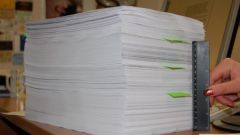Instruction
1
Start with checking the basic rules of drawing up trial balance. The results of the balances and turnovers of credit and debit must match, be accurate and valid as at the reporting as a whole and for each account and sub-accounts separately.
2
Note that at the beginning of the year balance for all accounts must meet the indicators of the trial balance at the end of last year.
3
Eliminate the formation of negative or credit value on balance on active accounts and property, as well as the formation of a negative or debit values on a balance of passive accounts. To balance accounts 90,91 and 99 balance must not exist at the beginning and end of the reporting code.
4
Confirm inventory balance at the end of the reporting pod on the accounts of assets and liabilities on property, settlements, obligations, counterparties and so on.
5
Check the consistency and compliance of the balance and turnover of interrelated accounts. For example, calculate which will confirm that the account turnover 90.3 "VAT" corresponds to the turnover on account of 90.1 Revenue. This can be determined by multiplying the count rate of 90.1 on the appropriate rate of VAT. In the end, to get a value of 90.3 account. Spend the same supporting calculations for other interrelated accounts.
6
Refer to p. 34 PBU 4/99, which stated that it was impossible to offset in the financial statements between articles of assets and liabilities, losses and profits, except when it is written in the corresponding provision in accounting. On the basis of this rule, the balance on liabilities in the statement should say "deployed", i.e., without summation. In other words, the existing debit balance is reflected in the corresponding asset item of the balance and the credit article liability. To reflect the net amount in that case, if the organization has deferred tax assets and liabilities, which are accounted for when determining profit tax.









